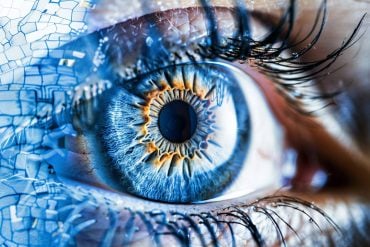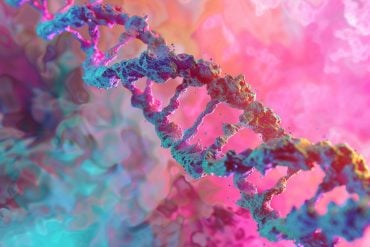Summary: A new study implicates oxytocin in corrective punishment that helps maintain fairness.
Source: SfN.
Punishing a wrongdoer may be more rewarding to the brain than supporting a victim. That is one suggestion of new research published in JNeurosci, which measured the brain activity of young men while they played a “justice game.”
Study participants played a game in which two players — a “Taker” and a “Partner” — each start out with 200 chips. The Taker can steal up to 100 of the Partner’s chips, and then the Partner can retaliate by spending up to 100 chips to reduce the Taker’s stash by up to 300 chips. Participants played as either a Partner or an Observer, who could either punish the Taker or help the Partner by spending chips to increase the Partner’s stash.
Mirre Stallen and colleagues found that participants were more willing to punish the Taker when they experienced injustice directly as a Partner as opposed to a third-party Observer.
The decision to punish was associated with activity in the ventral striatum, a brain region involved in reward processing, and distinguishable from the severity of the punishment.

Before beginning the experiment, all participants were given a nasal spray, with some randomly assigned to receive the hormone oxytocin, which has been suggested to have a role in punishing.
Participants in the oxytocin group chose to give more frequent, but less intense, punishments.
This finding implicates oxytocin in corrective punishments akin to a “slap on the wrist” to maintain fairness.
Funding: Funding provided by European Research Council, Erasmus Research Institute of Management.
Source: David Barnstone – SfN
Publisher: Organized by NeuroscienceNews.com.
Image Source: NeuroscienceNews.com image is credited to Stallen et al., JNeurosci (2018).
Original Research: Abstract in Journal of Neuroscience.
DOI:10.1523/JNEUROSCI.1242-17.2018
[cbtabs][cbtab title=”MLA”]SfN “How the Brain Responds to Injustice.” NeuroscienceNews. NeuroscienceNews, 19 February 2018.
< https://neurosciencenews.com/brain-injustice-8522/>.[/cbtab][cbtab title=”APA”]SfN (2018, February 19). How the Brain Responds to Injustice. NeuroscienceNews. Retrieved February 19, 2018 from https://neurosciencenews.com/brain-injustice-8522/[/cbtab][cbtab title=”Chicago”]SfN “How the Brain Responds to Injustice.” https://neurosciencenews.com/brain-injustice-8522/ (accessed February 19, 2018).[/cbtab][/cbtabs]
Abstract
Neurobiological Mechanisms of Responding to Injustice
People are particularly sensitive to injustice. Accordingly, deeper knowledge regarding the processes that underlie the perception of injustice, and the subsequent decisions to either punish transgressors or compensate victims, is of important social value. By combining a novel decision-making paradigm with functional neuroimaging, we identified specific brain networks that are involved with both the perception of, and response to, social injustice, with reward-related regions preferentially involved in punishment compared to compensation. Developing a computational model of punishment allowed for disentangling the neural mechanisms and psychological motives underlying decisions of whether to punish and, subsequently, of how severely to punish. Results show that the neural mechanisms underlying punishment differ depending on whether one is directly affected by the injustice, or whether one is a third-party observer of a violation occurring to another. Specifically, the anterior insula was involved in decisions to punish following harm, while, in third-party scenarios, we found amygdala activity associated with punishment severity. Additionally, we employed a pharmacological intervention using oxytocin, and found that oxytocin influenced participants’ fairness expectations, and in particular enhanced the frequency of low punishments. Together, these results not only provide more insight into the fundamental brain mechanisms underlying punishment and compensation, but also illustrate the importance of taking an explorative, multi-method approach when unraveling the complex components of everyday decision-making.
SIGNIFICANCE STATEMENT
The perception of injustice is a fundamental precursor to many disagreements, from small struggles at the dinner table to wasteful conflict between cultures and countries. Despite its clear importance, relatively little is known about how the brain processes these violations. Taking an interdisciplinary approach, we combine methods from neuroscience, psychology, and economics to explore the neurobiological mechanisms involved in both the perception of injustice as well as the punishment and compensation decisions that follow. Using a novel behavioral paradigm, we identified specific brain networks, developed a computational model of punishment and found that administrating the neuropeptide oxytocin increases the administration of low punishments of norm violations in particular. Results provide valuable insights into the fundamental neurobiological mechanisms underlying social injustice.






